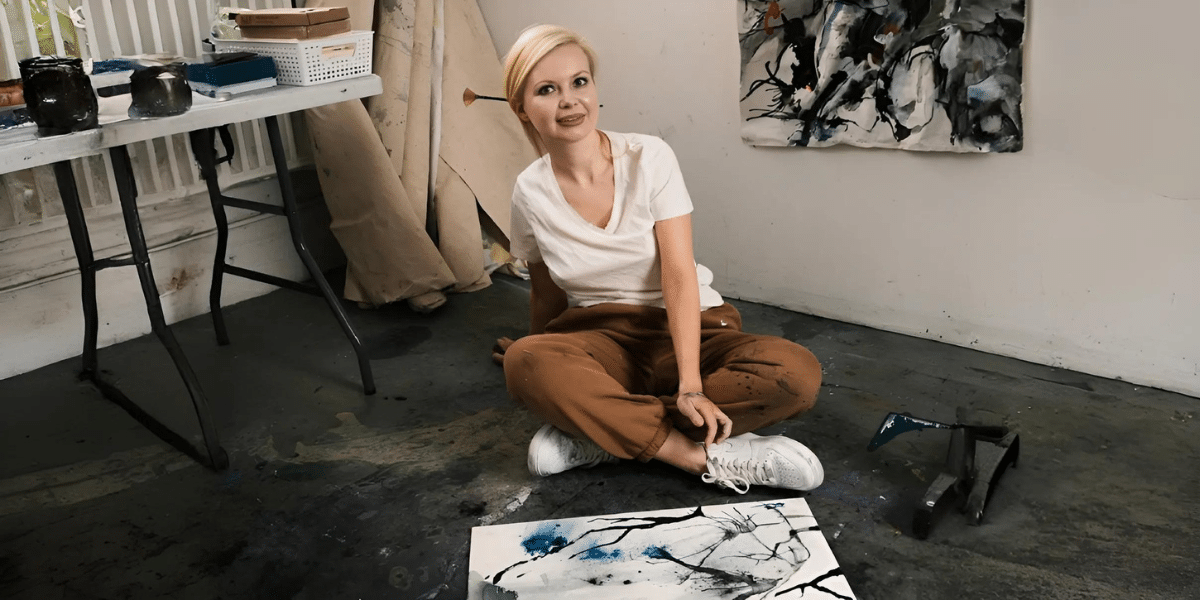By: Anna Parker
In the world of contemporary art, we are increasingly seeing artists whose work goes beyond traditional ideas of painting. One such artist is Ekaterina Stolyarova. She has found herself in a creative path that reflects her deep connection to nature and a commitment to eco-friendly practices in her art. Ekaterina creates unique paintings, using only natural and organic materials, and her works are not just art pieces, but a message about the importance of protecting the environment. In this interview, we learn more about her creative journey, ecological principles, and the philosophy behind her art.
How did you come to realize the importance of using eco-friendly materials in your art?
It was a gradual realization as I began to immerse myself more deeply in nature and see how much we harm it. I grew up in a region where environmental pollution was especially noticeable, and this undoubtedly shaped my worldview. Over the years, I increasingly understood that my art should not only be a means of expression but also a way to show people that nature needs protection. Using eco-friendly materials is my way of saying, “We can create without harming the environment.”
Your work reflects a deep connection to nature. How do you choose the materials for your paintings, and how important is it to you that they are eco-friendly?
Choosing materials for me is a process of finding harmony between nature and art. I carefully research what paints, canvases, and other materials are made of, and how they affect the environment. I prefer materials that do not harm nature and naturally decompose. It is extremely important to me that every element of my work is eco-friendly because it’s not just about respect for nature but also a vital part of my creative process.
How do you manage to preserve the brightness and richness of colors when using natural paints, which may fade over time?
Natural paints can indeed change over time, but I see this as a positive aspect. There is something natural and even magical about it — just as colors in nature change, so can the colors on a canvas. To maintain brightness, I experiment with different layering techniques and study ancient recipes for making paints that help keep their vibrancy longer.
Many artists still work with synthetic materials. Why do you think it’s important to transition to natural alternatives like plant-based paints or organic fabrics?
Synthetic materials are easily accessible and often cheaper, but their use places a heavy burden on nature. Transitioning to natural alternatives is a step forward not only for art but also for the planet. Artists need to understand their responsibility because we are not just creating paintings but also shaping the world around us. By using natural materials, we set an example of how to create without polluting nature.
How do natural elements, such as light, water, or even air, affect your work? Do you have to protect your paintings from their impact?
Natural elements are an important part of my work. For example, light often helps reveal the textures and layers of paint, and water can add a natural patina effect. I don’t strive to fully protect my works from nature’s influence, as it is part of their life. Sometimes I intentionally allow natural elements to interact with my paintings, so they continue to “live” even after I have completed them.
In your art, you aim for simplicity and naturalness. Do you have favorite natural materials that you work with most often?
Yes, I am particularly fond of natural pigments that can be sourced from the earth or plants. For example, I often use ochre and indigo — they have an exceptional depth and warmth. I also enjoy working with cotton canvases and recycled paper. All this naturalness allows me to create works that truly breathe and live.
Many artists are afraid that eco-friendly materials won’t be as durable as synthetic ones. What would you say to them?
This is a common fear, but I would say that durability is a relative concept. Everything in nature changes over time, and that’s normal. Instead of trying to stop time, I prefer to see my works as living entities that can change and evolve. Eco-friendly materials are not about preserving everything in its original state but about respecting the life cycle of things.
Eco-friendly art requires not only a creative approach but also knowledge of materials. How do you learn and explore new natural paints and techniques?
I’m always in the process of learning. I read a lot, communicate with other artists who are also interested in eco-friendly materials, and experiment on my own. I enjoy discovering ancient techniques that artists before us used, as many of them created masterpieces using only natural paints and materials. This inspires me to try new approaches in my own work.
How do your works help people see the beauty of nature and think about preserving it?
My goal is not just to depict nature but to convey its fragility and greatness. When people see my work, I want them to feel that connection to the world around us. I believe that art can be a powerful tool for change, and if my paintings make someone think about the importance of preserving nature, then I’m on the right path.
What advice would you give to young artists who are just starting their journey and want to try eco-friendly materials?
Don’t be afraid to experiment and learn. The world of eco-friendly materials is only beginning to develop, and there is enormous room for creativity here. Start small — explore natural pigments, try using recycled materials. The most important thing is to remember that your art can not only be beautiful but also ethical, and that gives it a special value.
Published by: Khy Talara


















